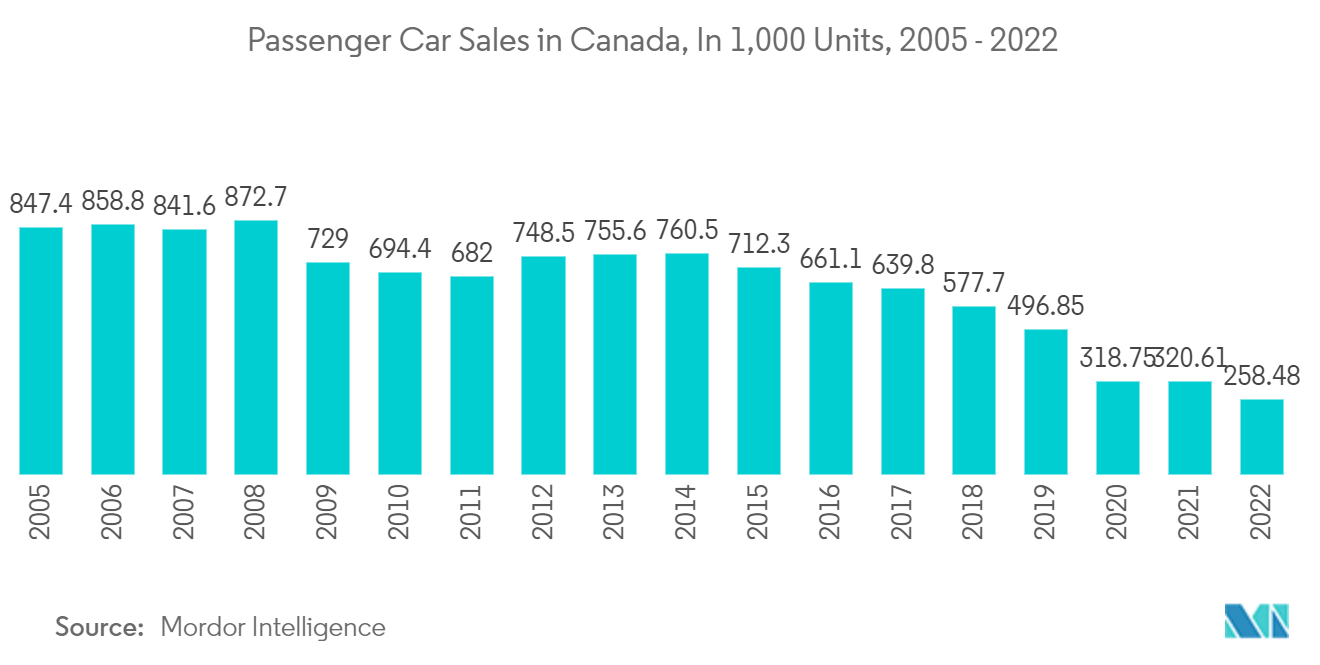Market Trends of Canada Automotive Parts Die Casting Industry
Automotive Segment will Drive The Market In Coming Year
- The demand for automotive die-casting parts in Canada is driven by several factors, including the country's robust automotive industry and its commitment to producing high-quality vehicles. The automotive sector is one of the major contributors to the GDP of the manufacturing sector in the country. Vehicular assembly plants and OEM part manufacturers are emerging in the country.
- Canada has an important automotive manufacturing sector, with numerous assembly plants and automotive suppliers across the country. The sector contributes significantly to the Canadian economy and requires a steady supply of high-quality die castings to meet production needs.
- The automotive industry is increasingly focusing on lightweight construction to improve fuel efficiency and reduce emissions. Die-cast parts, especially those made from lightweight materials such as aluminum and magnesium, play a key role in achieving these goals. Demand for lightweight die-cast parts in Canada is driven by stricter environmental regulations and the need to meet consumer demand for more fuel-efficient vehicles.
- In addition, 1,228,735 vehicles were produced in Canada in 2022, among which 289,371 vehicles were passenger cars and 939,364 vehicles were commercial vehicles. Canada is the 11th leading vehicle producer in the world. Furthermore, the presence of vehicle manufacturers such as Ford, GMC, and Stellantisin the region is attributable to the increased demand for die-casted parts.
- With technological advancements, Canadian manufacturers are expected to see a rise in demand for car exports, which will increase demand for die-casting for automotive materials as manufacturers are looking to reduce car weight to keep up with emission norms worldwide.
- In addition, consumers are increasingly adopting electric vehicles due to the increasing environmental concerns and enactment of fuel economy. According to Statistics Canada, the share of new registration of light-duty zero-emission vehicles (ZEVs) in Canada was 2.9% in 2019, 3.5% in 2020, and 5.2% in 2021, amounting to 86,000 vehicles. In the first half of 2022, 7.2% of new light-duty vehicles sold were ZEVs.
- Thus, growing developments and advancements in the electric vehicle industry and related establishments in Canada will provide lucrative opportunities for players in the die-casting market during the forecast period.
- The country is also witnessing increasing industries and die-casting companies due to the high availability of aluminum in this region.

Pressure Die Casting Captures the Largest Market Share
- With technological advancements, Canadian manufacturers are expected to see a rise in demand for car exports which intern will increase demand for automotive die-casting parts as manufacturers are looking to reduce car weight in order to keep up with emission norms across the world. The automobile industry is highly dependent on the Environment Protection Agency (EPA) regulations, owing to the high emissions of the automotive units.
- The move by the EPA to raise the miles per gallon (mpg) standards to 54.5 mpg by 2025 has actually helped the industry, as the automotive industry concluded that the only way to get to those mileage standards is by manufacturing lightweight vehicles. The traditional metal die casting industry is also facing threats from the newly emerging composites market, as composites provide the same physical properties and are much lighter than metal castings. European Union's target for CO2 emission reduction by 2030 is 37.5% for cars and 31% for light commercial vehicles.
- Owing to the advantages offered by the process of pressure die casting over other casting methods, the players in the industry are investing in expanding their operations in the country to fulfilling the demand for die casting for automotive in the country. Using the pressure die casting technique, high volumes of components can be produced with high accuracy over other processes.
- Also, the method is cost-effective and less time-consuming, and other advantages and the demand in the country is enabling the significant players in the country to invest heavily and expand their operations, for instance. The applications and complexity of die-casting products are constantly increasing. New alloy developments and process technologies are being developed to meet the specifications for structural and chassis. As well as castability, mechanical properties, and service life.
- Die-casting industries are focusing on developing conformal cooling, joining technologies, heat treatment, and hybrid components. Recently, Intelligent temperature control for die casting has been developed, which helps in the reduction of porosity in the surface, which results in higher casting quality, process stability, and high tool life.


